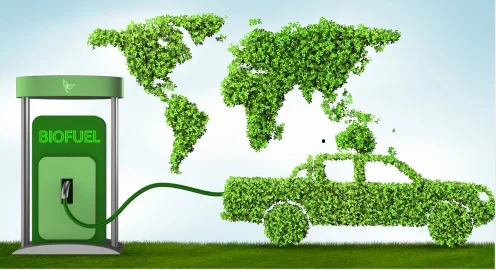Hydrotreated vegetable oil (HVO) is a renewable diesel fuel produced from oils and animal fats. It’s created through a process called hydroprocessing, where hydrogen is added to the feedstock under high pressure and temperature. This process significantly alters the chemical composition of the oils, resulting in a fuel with properties very similar chemical to fossil diesel.
How do you make hydrotreated vegetable oil?
The production of HVO involves several steps:
- Feedstock Selection: A wide range of feedstocks can be used, including used cooking oil, animal fats, and vegetable oils.
- Pre-treatment: The feedstock is pre-treated to remove impurities and water.
- Hydroprocessing: The pre-treated feedstock is mixed with hydrogen and passed over a catalyst at high temperature and pressure.
- Purification: The resulting product is purified to remove any remaining impurities.
- Blending: The purified HVO can be blended with other fuels or used as a pure product.
What are the benefits of hydrotreated vegetable oil?
- Reduced Carbon Emissions: HVO significantly reduces carbon emission compared to fossil diesel. Since it’s produced from renewable waste, it helps to lower greenhouse gas emissions.
- Improved Air Quality: HVO produces fewer harmful emissions, such as particulate matter and sulfur oxides, leading to improved air quality.
- Engine Compatibility: HVO can be used in most diesel engines without any modifications, making it a drop-in replacement for fossil diesel.
- Longer Engine Life: HVO can help extend the life of diesel engines due to its cleaner burning properties and reduced wear and tear.
- Reduced Maintenance Costs: The cleaner burning properties of HVO can lead to lower maintenance costs.
Is hydrotreated vegetable oil sustainable?
The sustainability of HVO depends on several factors, including:
- Feedstock Source: If the feedstock is sourced from sustainable sources, such as used cooking oil, the environmental impact is reduced.
- Energy Consumption: The energy required to produce HVO must be considered.
- Land Use: The production of feedstocks for HVO can have implications for land use.
What are the cons of hydrotreated vegetable oil?
- Cost: While the cost of HVO has decreased in recent years, it is still generally more expensive than fossil diesel.
- Infrastructure: The infrastructure for distributing HVO is still developing in many regions.
- Competition for Feedstocks: There is competition for feedstocks between HVO production and other industries such as food and bioplastics.
Industrial applications of HVO
HVO’s versatility allows it to be used in a wide range of industries, providing a cleaner and more sustainable alternative to traditional fossil fuels.
Marine Industry
- Advantages: HVO can reduce emissions from marine vessels, contributing to cleaner coastal environments and compliance with stricter regulations.
- Challenges: The higher cost of HVO compared to traditional marine fuels and the need for infrastructure upgrades to accommodate its use.
Off-Road Equipment
- Applications: HVO can be used in heavy machinery, such as construction equipment and agricultural vehicles, reducing emissions and improving performance.
- Benefits: Improved fuel efficiency, reduced maintenance costs, and enhanced engine life.
Comparison with other biofuels
Understanding how HVO compares to other biofuels can help in assessing its overall sustainability and potential benefits.
Fischer-Tropsch (FT) Fuels
- Similarities: Both HVO and FT fuels are synthetic fuels derived from renewable sources.
- Differences: FT fuels are produced through a different process, using syngas as a feedstock, while HVO is produced directly from vegetable oils and fats.
Ethanol
- Complementary Fuels: HVO and ethanol can be used together in blended fuels to optimize performance and reduce emissions.
- Applications: Ethanol is primarily used in gasoline blends, while HVO is used in diesel engines.
Environmental and social impacts
Assessing the environmental and social impacts of HVO production and use is essential for understanding its overall sustainability.
Land Use and Biodiversity
- Sustainable Sourcing: Ensuring that the feedstocks used for HVO production are sourced sustainably is crucial to minimize negative impacts on land use and biodiversity.
- Certification Schemes: The use of certification schemes, such as the Roundtable on Sustainable Palm Oil (RSPO), can help to ensure that the feedstocks are produced responsibly.
Social Impacts
- Economic Benefits: HVO production can create jobs and stimulate economic growth in rural areas.
- Community Engagement: Engaging with local communities and addressing their concerns is essential for the successful implementation of HVO projects.
Future trends and challenges
Looking ahead, HVO faces both opportunities and challenges as it continues to evolve and gain wider adoption.
Technological Advancements
- Improved Production Processes: Ongoing research and development are focused on improving the efficiency and cost-effectiveness of HVO production.
- New Feedstocks: Exploring alternative feedstocks, such as algae and waste cooking oil, can help to expand the availability of HVO.
Regulatory Landscape
- Government Policies: The role of government policies in promoting the adoption of HVO and addressing regulatory challenges will be crucial.
- Carbon Pricing: Implementing carbon pricing mechanisms can provide a strong incentive for the use of low-carbon fuels like HVO.
HVO and the circular economy
HVO can play a significant role in promoting a circular economy by utilizing waste products and reducing reliance on fossil fuels.
- Waste-Derived Feedstocks: HVO can be produced from waste cooking oil, animal fats, and other waste materials, contributing to a more sustainable waste management system.
- Energy Recovery: The production of HVO can also generate heat and electricity as byproducts, further enhancing its environmental benefits.
HVO and energy security
HVO can contribute to energy security by reducing dependence on imported fossil fuels and diversifying energy sources.
- Domestic Production: Producing HVO domestically can reduce reliance on foreign oil and strengthen energy independence.
- Resilience: HVO can provide a more resilient energy supply, as it is less susceptible to geopolitical disruptions that affect traditional fossil fuel markets.
Hydrotreated vegetable oil (HVO) offers a promising alternative to fossil diesel, with significant benefits in terms of reduced carbon emissions and improved air quality. Its compatibility with existing diesel engines and potential to reduce maintenance costs make it an attractive option for the transportation sector. However, challenges such as cost and infrastructure development need to be addressed to facilitate widespread adoption.
Recommendations
- Government Incentives: Governments can encourage the adoption of HVO through tax incentives and mandates.
- Research and Development: Continued research is needed to improve the efficiency of HVO production and reduce costs.
- Infrastructure Development: Investments in infrastructure, such as fueling stations, are necessary to support the growing demand for HVO.
- Sustainable Feedstock Sourcing: Efforts should be made to ensure that the feedstocks used for HVO production are sourced sustainably.
By addressing these challenges and leveraging the benefits of HVO, we can contribute to a more sustainable and environmentally friendly transportation sector.






